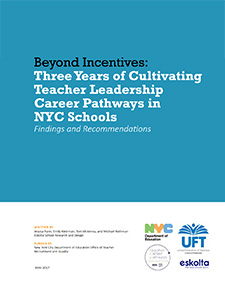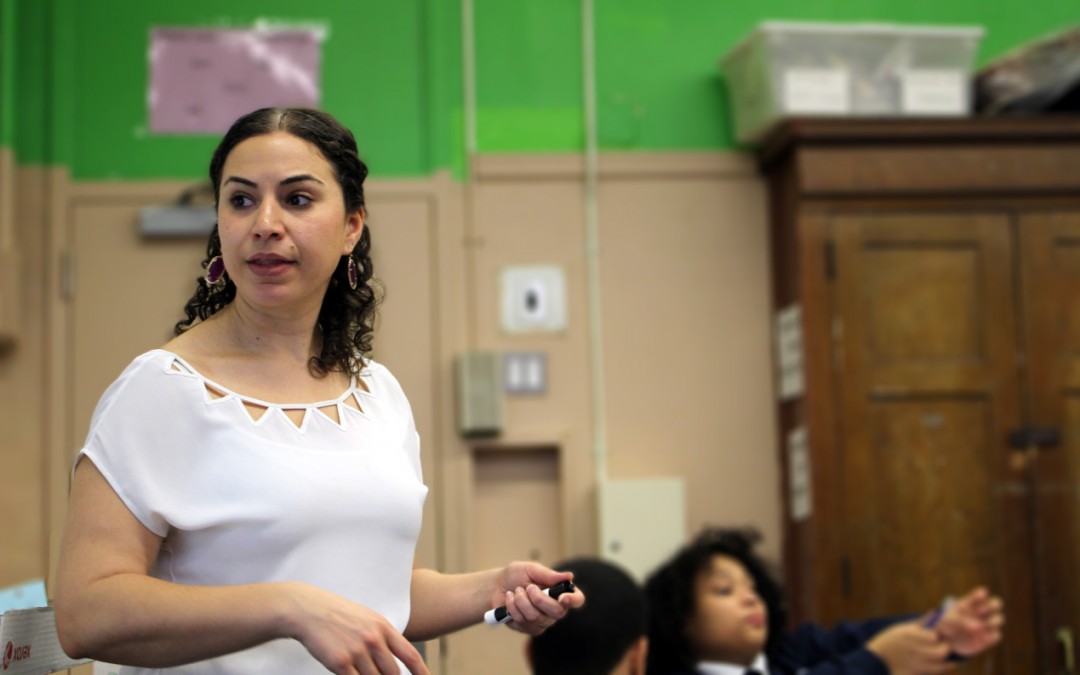“I feel a lot of ownership in this school because I do feel like my work really matters here and makes a difference.”
Teacher leaders can be powerful levers for school change. Yet in many districts, talented teachers must look outside the classroom to find positions that will allow them to grow and make a broader and deeper impact. In 2013, the New York City Department of Education Office (NYCDOE), in partnership with the United Federation of Teachers (UFT), launched a new model of teacher leadership, designed to provide professional opportunities for experienced teachers to share their pedagogical skills beyond the classrooms. The work was supported by a five-year grant from the Teacher Incentive Fund (TIF), which initially piloted the program in 78 high-need middle schools. Over four years, Teacher Career Pathways developed three new roles in which experienced teachers share their pedagogical skills, coach colleagues, and build systems of collaborative learning in their schools. By 2016–17, there were 1,236 teacher leaders across 482 schools, many involved in several key citywide initiatives.
The NYCDOE Office of Teacher Recruitment and Quality teamed up with Eskolta to investigate the development and impact of the new model for teacher leadership. Beyond Incentives highlights findings and recommendations based on three years of analysis of the Teacher Career Pathways work. It explores both qualitative and quantitative data, including 26 in-depth interviews with teacher leaders, principals, and teachers; roundtable discussions with 39 teacher leaders; and more than 12,000 survey responses from educators. Beyond Incentives also details key findings about the impact of this program, including that teachers who work with teacher leaders report that doing so helped them to improve their own practice; that those who did so frequently were more likely to report that they felt valued in their schools and saw opportunities to advance in their profession; and that teacher leadership can foster professional collaboration, which is fundamental to overall school improvement but often hard to achieve. As one teacher leader put it, “If this program didn’t exist, I don’t think I would have the time, space, or opportunity to work with other colleagues. I don’t even know if they would be willing.”


